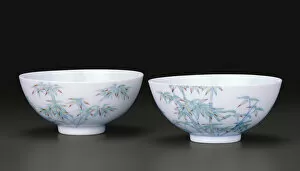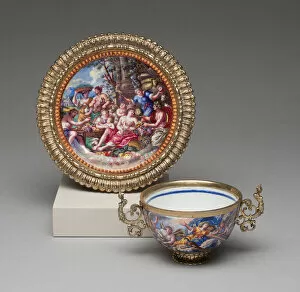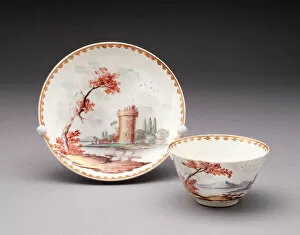Tea Bowl Collection
In the world of tea, the humble tea bowl holds a special place and has witnessed countless scenes from history and art, capturing the essence of Japanese culture
All Professionally Made to Order for Quick Shipping
In the world of tea, the humble tea bowl holds a special place and has witnessed countless scenes from history and art, capturing the essence of Japanese culture. One such scene is depicted in the "Chushingura" Drama, dating back to 1797. Created by Ichirakutei Eisui, this dramatic portrayal showcases the importance of tea ceremonies and their connection to samurai honor. The Sakuragawa Teahouse, crafted by Kitao Shigemasa in 1777, transports us to a serene setting where friends gather for a cup of tea. The delicate brushstrokes bring life to this tranquil oasis. Traveling further back in time, we encounter a Song dynasty Tea Bowl from the 12th century. Its mysterious creator remains unknown but left behind an exquisite piece that embodies elegance and simplicity. Another Song dynasty creation catches our eye - a Teabowl with an everted mouth rim. This unique design adds flair to traditional aesthetics while still maintaining its functionality as a vessel for brewing and savoring tea. Delving deeper into history, we discover fragments of Tea Bowls fused together during firing in saggar kilns. These accidental masterpieces showcase resilience and beauty born out of imperfections. Stepping into more contemporary times, we witness magic unfold through Tezuma performances captured in prints from 1811/13. These captivating acts combine sleight-of-hand tricks with storytelling elements that mesmerize audiences during teahouse gatherings. Raku-Ware takes center stage with two distinct pieces - one adorned with descending geese and another featuring an image of majestic Mt. Fuji. Both exemplify the craftsmanship that has made Raku-Ware renowned throughout centuries. Hosoda Eishi's artwork titled "The Fifth Month" offers us glimpses into daily life at teahouses during different seasons - showcasing vibrant kimonos worn by waitresses serving guests with grace and poise.
















































